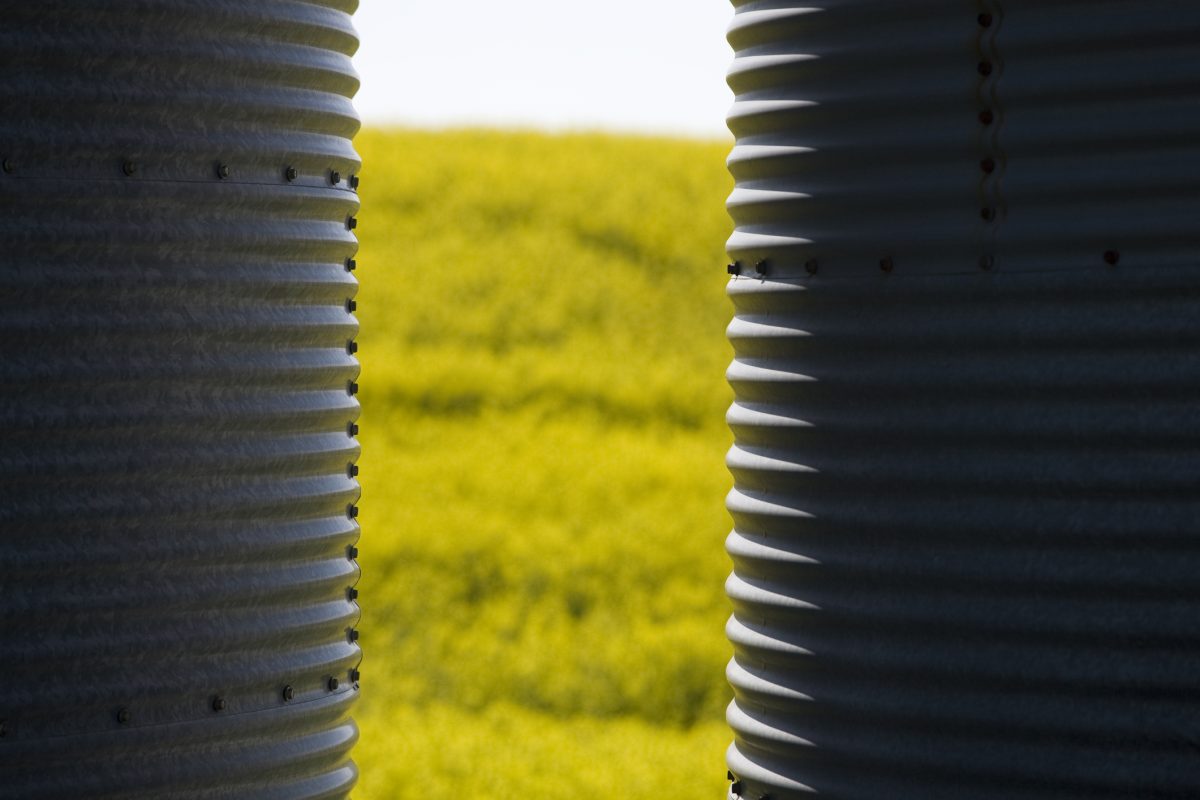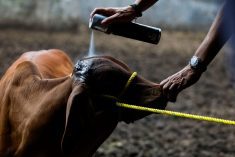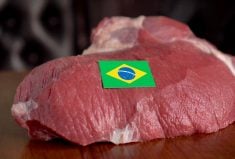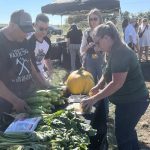CHICAGO (Reuters) — Grain farmers walked away from the new federal farm bill with more than $50 billion in subsidized crop insurance programs, but livestock producers did not fare as well.
They still have no program of subsidized insurance for cattle, pig, poultry or other animal deaths from disease. Instead, major aid for livestock producers comes only as disaster funds for livestock lost in drought, floods, heat waves or winter freezes.
Forecasts for those costs total about $2.1 billion for the next five years, according to the Congressional Budget Office.
Read Also

Farm cash receipts rise in first half of 2025 on livestock gains
Farm cash receipts in the first half of the year were up 3.3 per cent over the same period last year buoyed by livestock receipts. Overall receipts between January and June totalled $49.6 billion, up $1.6 billion from the same period last year, Statistics Canada reported.
For livestock disease losses — such as brucellosis, Newcastle disease in poultry or the current porcine epidemic diarrhea virus, which is killing young piglets in many states — livestock producers remain on their own.
“The insurance available to livestock producers pales in comparison with crop producers. I’ve never entirely understood why,” said Craig Cox, a critic of farm programs with the Environmental Working Group. “Livestock producers apparently have never really pushed hard for this kind of insurance.”
Private insurers do offer livestock insurance to farmers but usually for property or casualty damage, not death loss due to diseases.
There are also formulaic hybrid insurance schemes based on protecting against rising feed prices or falling livestock or meat prices, and they can be expensive. Only one percent of all U.S. livestock production is insured under these programs.
“There is not a livestock insurance program like there is with crop insurance,” said Colin Woodall, vice president of governmental affairs of the National Cattlemen’s Beef Association. “There is no federally backed program. There are a few private programs. A lot of times the cost of it — especially for smaller producers — is not something that is feasible for them. Most producers are at the whim of nature and the weather.”
Why have livestock producers not pressed for subsidized insurance, as grain farmers have?
“Because we’ve never asked for them,” Woodall says. “We like to keep the government out of our business, and I think they see any government-sponsored program as the government getting into our business one more time.”
Insuring any kind of agricultural production risk is tough. But with livestock the risk is not just weather but communicable diseases, which can wipe out far more production than crop diseases, especially with modern confinement systems housing thousands of chickens or hogs or dairy cattle under one roof.
“There’s been a lot of interest in developing disease-based insurance products for producers because that’s a major risk of confinement operations,” said Carl Zulauf, farm economist at Ohio State University. “The more systemic the risk, the harder it is to get the insurance without government subsidies. Then you raise the question whether government should be subsidizing that insurance in the first place.”
Roger Zylstra, an Iowa grain farmer who also feeds hogs on contract, said the PED epidemic is putting the uncovered risks of livestock farming in a harsh spotlight.
“There are a lot of outfits that have been severely impacted by this,” he said. “There’s not a lot of insurance things you can do. With diseases and things like that you’re pretty much on your own — it’s just hard to deal with all that.”
Cullen Schwarz, spokesman for the U.S. Agriculture Department, acknowledged that PED assistance options are limited.
“Congress provides us little authority and funding in our current disaster assistance programs to address issues of this nature, but we are continuing to look for ways to effectively help producers who have been affected,” he said.
Still, even if the risks of insuring livestock seem too high, the new farm bill’s push toward expanded “revenue insurance,” from direct payments to grain growers, may drive livestock farming in that direction — specifically, insurance based on projected normal revenues rather than actual crop or livestock death losses.
“In this farm bill the dairy industry pushed hard to revamp the way they are subsidized by taxpayers and to move more in the direction that looks like the revenue insurance protection that crop producers enjoy,” Cox said. “In the case of dairy they call it margin insurance.”
Livestock producers fought hard to keep current disaster programs in place in the new farm bill. In fact, they successfully lobbied Congress to make disaster payments for weather-related livestock losses retroactive back to Oct 1, 2011 — when the programs expired and were frozen because of Washington politics.
“We have struggled in the past to keep those programs funded,” Silvia Christen, executive director of the South Dakota Stockgrowers Association, said in an interview from her office in Rapid City. “The livestock industry does not consider these insurance products because USDA has to declare an area as a disaster before they kick in.”
Christen said the new farm bill was a long-delayed reprieve for South Dakota cattle farmers after thousands of cattle died last fall in winter storms.
“Our livestock producers have never had government subsidies and we’re not asking for a government program to bail us out,” she said. “This was a disaster situation where we had a massive part of our industry hit. That funding is an appropriate role for government to get a community back on its feet after something like this hits.”














